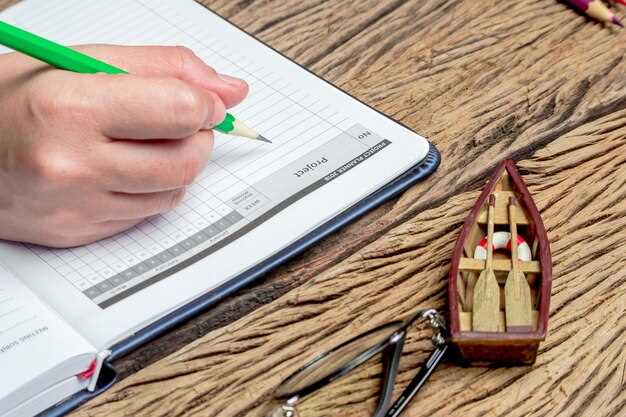How to verify a boat’s ownership history

Understanding the history of a boat is crucial for potential buyers, ensuring they make informed decisions and avoid costly pitfalls. Verifying a boat’s title and ownership records is an essential part of this process. Such verification not only confirms the legitimacy of the seller but also provides insights into the boat’s maintenance and potential issues it may have faced.
In the following sections, we will outline the necessary steps to thoroughly verify a boat’s ownership history. From checking public records to utilizing specialized databases, each step is designed to safeguard buyers from fraud and to ensure that their investment is sound. By taking the time to investigate a boat’s history, buyers can have peace of mind as they navigate the waters of boat ownership.
Equipped with the right tools and knowledge, prospective boat owners can confidently assess the title and underlying history of their potential purchase. This article will guide you through the process, highlighting the importance of each step involved in verifying a boat’s ownership history.
Conducting a Title Check Through Official Channels
When verifying a boat’s ownership history, conducting a title check through official channels is an essential step. This process helps ensure that the boat you are considering has a clear and legal title, free from liens or outstanding claims. Here are the key steps to perform an effective title check.
First, you will need to obtain the boat’s title number or hull identification number (HIN). These identifiers are crucial for retrieving accurate records from governmental agencies. The title number is often found on the document itself, while the HIN is usually located on the transom of the boat or inside the engine compartment.
Next, contact the relevant state agency responsible for boat registrations. In the United States, this is typically the Department of Motor Vehicles (DMV) or a similar entity. You can find the contact information on their official website. Inquire about their procedures for conducting a title check, as different states may have varying requirements.
After you have contacted the appropriate agency, you may need to fill out a request form or provide specific information regarding the boat, such as make, model, and year. Some states might allow you to conduct this check online, while others require in-person visits or mailed requests.
Once your request is processed, you will receive information regarding the boat’s title status. Be sure to check for any reported liens, ownership transfers, or theft records. These details can significantly impact the legality of your potential purchase.
In addition to the official state title check, consider cross-referencing any findings with online databases or services that specialize in boat history reports. These platforms can provide additional insights into the vessel’s background, including accident history or repair records.
Ultimately, conducting a thorough title check through official channels is crucial to ensuring that your investment in a boat is secure and legitimate. Following these steps will help you avoid potential legal issues and provide peace of mind as you navigate the process of boat ownership.
Inspecting the Boat for Signs of Previous Damage and Modifications

When verifying a boat’s ownership history, an essential step is to check the vessel for any signs of previous damage or modifications. These factors can significantly affect the boat’s value and safety.
Begin by examining the hull for any visible cracks, scratches, or irregularities. Look closely at the seams and joints where the fiberglass or wood may show signs of wear. Any repairs made to the hull should be scrutinized; high-quality work will usually be neat and well-executed, while poor repairs can indicate past issues.
Next, inspect the interior of the boat. Pay attention to areas around the engine compartment, bulkheads, and any storage compartments for signs of water intrusion. Look for water stains, mold, or rot, which can suggest that the boat has sustained damage. Additionally, check the condition of the upholstery and fixtures for alterations that might indicate previous modifications.
It’s also vital to assess the boat’s systems, such as electrical and plumbing, for any unconventional changes. Make sure that these modifications have been executed properly and safely. A poorly done alteration can lead to malfunction or increased maintenance costs.
Lastly, refer back to the title and ownership records. Cross-check dates of ownership with the condition of the boat; if significant damage or modifications are present, it should align with incidents reported in the ownership history. This comprehensive approach will provide you with valuable insight into the boat’s overall condition and reliability.
Utilizing Online Databases and Resources for Boat History Reports

When purchasing a boat, verifying the ownership history is crucial to ensure that you are making a safe investment. Online databases and resources can simplify this process significantly. These platforms provide comprehensive boat history reports that reveal important information about a vessel, allowing potential buyers to make informed decisions.
One of the primary resources for checking a boat’s history is the National Oceanic and Atmospheric Administration (NOAA) for registered vessels. This database offers insight into a boat’s registration status, identifying any liens or legal issues associated with it. Additionally, state-level registries can provide localized information that may not be available through federal databases.
An essential component of a boat history report is the Vessel Identification Number (VIN). Using this number, you can access detailed records that may include previous owners, accident history, and title status. This information is critical for assessing the condition and reliability of a boat before purchase.
Various private companies also offer boat history reports, similar to Carfax for vehicles. These companies compile data from multiple sources, including insurance claims, repair histories, and inspections. Utilizing these services can help you uncover hidden problems, such as a history of damage or theft, which may not be immediately apparent during a physical inspection.
In addition to databases, online forums and community resources can serve as valuable tools for gaining insights into a boat’s reputation. Speaking with former owners or enthusiasts can provide anecdotal information about the boat’s performance and reliability over time.
In summary, utilizing online databases and resources is a vital step in verifying a boat’s ownership history. By conducting thorough checks, prospective buyers can ensure they are making a well-informed decision, safeguarding their investment against potential issues down the line.




